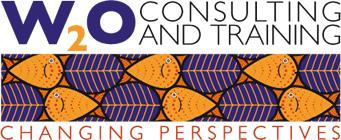Responsible for Diversity & Inclusion and wondering where to start? How do you set priorities? Is it about ethnicity or gender or LGBT? Should you focus on gender pay gap or intersectionality or not focus at all? That is the moment you need a proper strategy. But how do you design a diversity and inclusion strategy? Which questions do you need to ask first? What is a good one? What needs to be part of it?
What most people do when they design a Diversity and Inclusion Strategy
When they realise they need to design a diversity and inclusion strategy, most people look at what others do. They benchmark their rough diversity data against other organisations in their industry, visit a few events, browse around on the web, chat with a few people and then start with something easy. Perhaps some staff networks, or perhaps gathering better data. That may sound like a good way to do it, but does it actually work? Will it get you the results you are after?
What you really need to do to design a Diversity and Inclusion Strategy
In my view choosing your diversity initiatives like that is a bit like a student choosing a university course by asking others – usually their best friends – what they will take. Every parent knows that in the end it’s more relevant to focus on your own strengths and weaknesses, and your own desires and dreams. When you design a diversity and inclusion Strategy it is the same; it’s actually more relevant to look at yourself. Ask yourself:
- Where are your strengths and weaknesses when it comes to D&I?
- Why is D&I important to you?
- Why is it important to your organisation?
- How will D&I help you achieve the aims you have set for your organisation?
- How will D&I help your talent management? Are you keen to attract more talent? Are you keen to attract the best talent? Or are you looking to solve a costly issue with retention or advancement?
- How will D&I solve your business problems? Are you keen to facilitate innovation, creativity or bring new ways of thinking? Or are you focusing on improving levels of engagement and, productivity? Or perhaps it’s more about the cost for you. Perhaps you need to get a grip on the cost of potential sexual harassment cases, the cost of people leaving or, the risk to your reputation?
- How will more diverse employees bring benefits to your clients? Will it help you understand your market so you can design and sell to a diverse range of clients? Or will it help you build relationships with other key stakeholders, including investors and rule makers? Which ones are key for you?
- How does D&I fit with your values? Is it for you about being a great company to work for? Would you like to be seen as leading in your industry in all areas?
It’s easy to say a few abstract words such as ‘D&I is great for business and it has been proven to improve the bottom line’. But have you really thought about how that works in your organisation? If you need more inspiration on what the drivers can be do have a look at this article on the business case for gender diversity.
These are big questions to answer, and you may well wonder how that gets you to a diversity and inclusion strategy. So, let me give you a few examples of what this might look like.
How it works in practice
One of the biggest problems a client of mine has identified is lack of talent. They are keen to recruit anyone, from as wide a range as possible and believe recruiting more diverse groups can help them reach a wider audience. So they focus on recruitment first, retainment second. They review which groups they are currently recruiting from, then review which groups are underrepresented and focus on those. Meanwhile they analyse retention of people from those groups that they already employ. Verifying if they have an inclusive environment. That will help them understand if the new people from a more diverse range of groups will stay and thrive.
Another client I work with is hiring a large group of new people. They have an inclusive culture already, and are employing a diverse range of people. However, they are keen to keep it inclusive, so they decided to focus their D&I programme on the onboarding process, making sure new hires understand what is expected in terms of inclusive behaviour. This helps them retain current staff and keep engagement high.
Another client has just discovered that 60% of their top talent is female. They have also found that most of these women leave between the age of 30-40. Not only does it bring a huge cost to replace those that leave, it also leaves potentially a huge gap in succession planning. So they are focussing on retention of women, and next will be adding strategies for advancement of women.
What will you do to design your Diversity and Inclusion Strategy?
So you can clearly see that to design a diversity and inclusion strategy that works for you does require you to get the numbers and find the biggest issues, and it does help to know what others are doing. The key to a good strategy though, is to start with you and your organisation. Ask yourself the question “How will a more diverse workforce – that is able to contribute fully in an inclusive environment – help me achieve my business goals?”
If you’re ready to design or review your diversity and inclusion strategy, and would like some help turning ideas into actions, then join us for a session of strategy planning.
If you’re ready to design or review your diversity and inclusion strategy, but just need a quick and compact way to help you transform your ideas into actions then join us at our online webinar.



Author: Inge Woudstra
Would you like to know more or have a question? I am always happy to have a chat to discuss your needs. Why not drop me a line or pick up the phone? Call me at 01372 457 907 or Just contact me to discuss your requirements by e-mail.I can help you recruit, retain and advance women, and typically work with organisations in tech and engineering.
Or just check out my book 'Be Gender Smart - The Key to Career Success for Women'